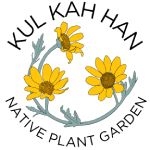The garden area has eight distinct areas in this one acre garden. This represents the essence of a particular Pacific Northwest or “plant community”.
By observing the plants growing within these areas, one is able to learn;
*Where and how they grow
*Their unique characteristics
*Their applications in sustainable, earth-friendly landscaping.
Definition of native plants
Those originally growing in the Pacific Northwest before the Europeans arrived in the late 1700’s. The indigenous peoples who lived in this area at that time used these plants for food, clothing and medicine. Ex. Chief Kul Kah Han with the Chemaquan tribe.
Descriptions of garden areas
Most of the areas in this one acre garden represent the essence of particular ecosystem of “plant community”. They are described below as they exist in the wild on own Olympic Peninsula as well as in Southwest British Columbia, Western Washington, Western Oregon and the Columbia River Gorge. Plants that have similar needs for soil type, light and moisture grow together in a community naturally. This provides clues toward the appropriate placement and care of plants in the home landscape.
A Search engine is provided to help you locate plants:

Short, drought tolerant flowers such as penstemon are found on slopes of sandy, gravelly soil. Taller shrubs such as shrubby cinquefoil and spirea densiflora appear along with occasional clusters of trees such as subalpinefir. Plants needing more moisture grow near seeps or runoff from boulders.
Groves of trees such as mountain hemlock and Pacific silver fir grow on mountain slopes. Boulder outcrops in thin soils displayplants such as red heather and lousewort. Sedge grasses and elephant head are found in seeps and open, wet areas. Lilies abound where it is moist in spring and well drained.
Low elevation temperate forest. The top 12 inches of the soil is rich in organic matter from years of falling leaves and twigs. Tall evergreen trees create deep shade, preserving moisture in summer. Smaller deciduous trees or shrubs such as Indian plum and vine maple grow in partly sunny openings in the woods. In the understory are shade loving perennials, ferns and mosses.
As in all forests, the soil is rich in organic matter. Dry forests occur where there is no water source and where sun enters open areas. Here you’ll find trees such as Western red cedar and Douglas maple, understory plants such as Oregon grape, sword fern and Douglas fir.
Large flat, open, sunny areas of mostly dry with occasional moist soil, low in nutrients. Large drifts of blue eyed grass or self-heal often combine with fescue or oatgrass. Occasional groves of Garry oak are surrounded by wildflowers such as camas and nodding onion.
Found at any elevation where the soil is saturated for part of the growing season, in bogs and swamps and often occurring near lakes, ponds and streams. The soil is usually peaty and acidic in either sun or part shade. Sedges and rushes predominate along with shrubs such as Labrador tea. Flowers may include; kneeling angelica and white marsh marigold.
Any area disturbed by the activities of humans (i.e. the building of homes) or the forces of nature (i.e. severe weather or fires from lightning.). This ecosystem normally gives the rise to noxious weeds of all sorts. See Picnic Shelter
Garden area being developed.
